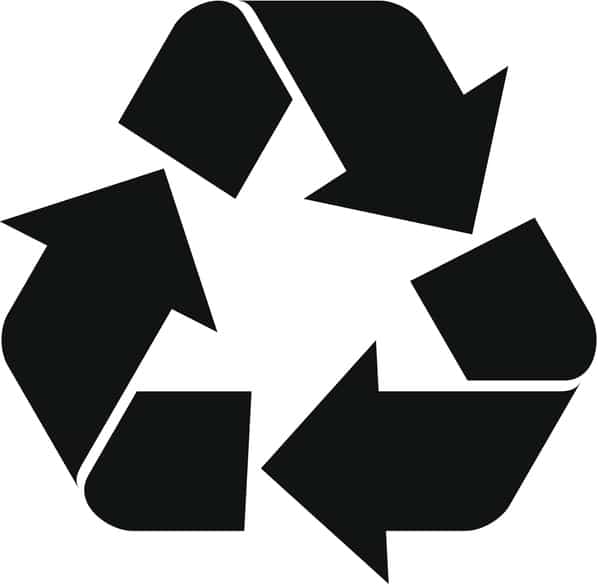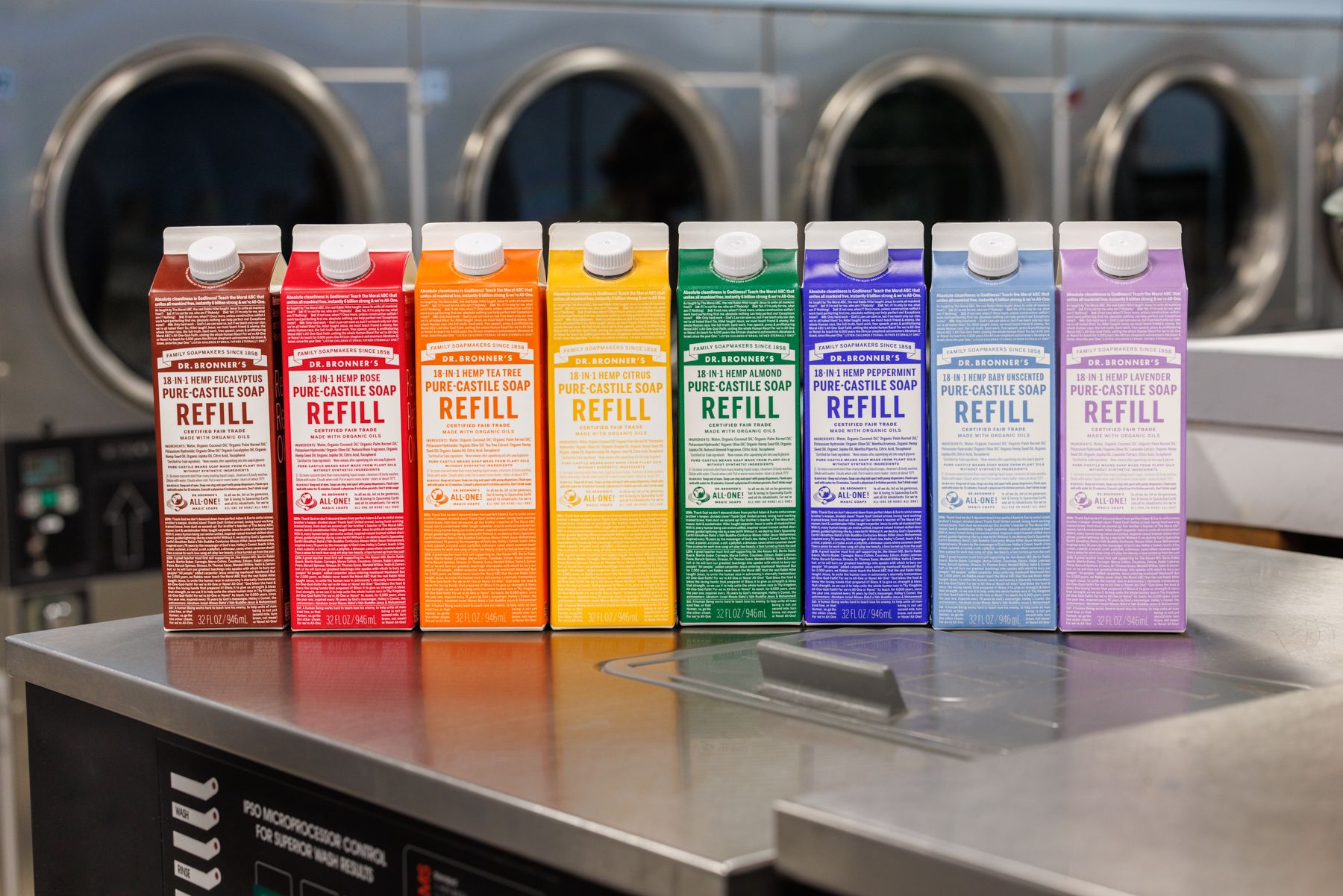For decades, plastics have provided us with cheap, durable, and lightweight solutions in just about every industry. This is especially true when it comes to the packaging of personal care products. However, this convenience comes at a cost. Plastic packaging waste has numerous detrimental impacts on the environment, from sitting permanently in landfills and seeping into the soil, polluting our oceans, and even ending up in the food we eat. So, how can companies reduce plastic use in their products?
Table of Contents
The Problem with Plastic Recycling
According to the EPA, even plastic packaging that’s supposed to be “very recyclable” is, at best, recycled in the U.S. at a rate of 29% [1]. A Greenpeace report showed that plastic recycling rates in the U.S. has dropped to less than 6%. To top it off, the Ellen McArthur Foundation found that only about 2% of plastic recycled globally each year gets turned into new plastic products [2].
How did we get here? Why isn’t the plastic we put into the recycling bins not being recycled? The beginnings of the modern plastic crisis we currently face dates to 1970 when 20 million Americans took to the streets for the first-ever Earth Day. Demanding more sustainable practices from corporations and governments, advocates put pressure on the plastic industry to reduce waste. As a result, the plastic industry created the widely used and recognized recycling symbol to encourage people to recycle:
Later, the plastic industry used this symbol as a greenwashing tactic. In 1988, the Society of the Plastics Industry introduced the seven resin identification codes (RIC) to identify the type of resin used in a container’s construction. The problem? They coopted this recycling symbol which had become ubiquitous and etched into consumers’ minds.
Of the seven RICs, only two are actually recyclable: 1-PET & 2-HDPE. In 2019, the Consumer Brands Association interviewed 2,000 US citizens and, when asked about recycling, 68% believed that a plastic container listed with any RIC was recyclable [3]. On top of this, oil and gas companies spend millions of dollars to perpetuate plastic use, as plastic is derived from coal, crude oil, natural gas, and many other materials. In 2018, the EPA reported that, of the 35 million tons of plastic containers thrown away in the US, only 3 million were successfully recycled [4].
As a result, decades of plastic waste have led to numerous environmental problems [5]:
- Approximately 4% to 8% of global oil production is used for plastics.
- About eight million tons of plastic end up in our oceans each year, which could double by 2025.
- Globally, over 90% of the 8.3 billion tons of plastic waste aren’t recycled. Most plastics and up in landfills and micro- and nano-plastics find their way into the food we eat.
- Plastics emit greenhouse gases as they decompose, contributing to climate change.
How Can Sustainable Packaging Make a Difference?
A recent study shows that sustainable packaging is a top concern among most consumers [6]. In North America, 80% of consumers want to know the origin of the products they buy and 69% of them are willing to pay a premium for sustainably made and packaged products. Some examples of sustainable packaging include:
- Corrugated boxes
- Paper & cardboard packaging
- Mushroom packaging [7]
- Aluminum packaging
- Compostable packaging
Instead of plastics, sustainable packaging uses recycled materials and has a lower-impact production process. It also reduces a company’s use of natural resources and lowers its carbon footprint. Another positive is decreasing the risk to the workers involved. For example, frequent exposure to BPA, a chemical found in plastics, can lead to increased risk of heart disease, certain cancers, and other illnesses. Workers in factories, warehouses, and other environments where plastic is in abundance may be at greater health risk.
How Can Body & Home Care Companies Reduce Plastic Packaging?
Post-Consumer Recycled Bottles
Some industries have it easier than others when it comes to reducing plastic. For body and home care items, reducing or ceasing to use plastic altogether is quite a challenge. One solution is for more companies to begin using Post-Consumer Recycled (PCR) material for their products. PCR plastic uses less energy and resources to produce than traditional, virgin plastic and doesn’t add any new plastic to the world. PCR plastic is a one-material plastic, making it easier to be recycled and reused. While not biodegradable, it can be recycled approximately nine times. Even though it’s still plastic and can contribute to pollution if a consumer doesn’t properly recycle it, PCR plastic is a massive improvement over traditional and even plant-based plastic.
Further reading: How We’re Addressing Our Plastic Use
In-Store Refill Options for Liquid Products
Companies offering refills for liquid-based products is another great option. For example, if you purchase a bottle of Dr. Bronner’s soap, we encourage you to visit participating retailers and refill your bottle in-store. Because we use a screw-top, it’s simple and convenient to refill. On top of this, it’s a cheaper option for the customer since they don’t have to buy a new bottle.
Offer More Sustainable Refill Options to Reuse Existing Plastic
While not every brand you buy from will conveniently have a refill station in a store near you, another option is for companies to offer refills of their product in sustainable packaging. Some companies that sell body and home care products have begun offering refill options that allow a customer to keep their existing plastic container and, instead of buying a replacement, choose a refill option that comes in packaging that’s more sustainable than plastic.
Introducing Dr. Bronner’s new 32 oz. Pure-Castile Liquid Soap Refill Carton, available in all eight scents! Starting July 2023, you can use this eco-friendly option to refill your current Dr. Bronner’s Post-Consumer Recycled bottles or other containers for cleaning and personal care. Using 82% less plastic than our PCR 32 oz bottles, this refill carton helps you reduce your plastic footprint. Choose our ultra-concentrated soap and reuse your Dr. Bronner’s bottle for a more sustainable solution!
Learn more about our Carton Refill Collection
Offsetting and/or “Insetting” Greenhouse Emissions
Offsetting is the process of counteracting the amount of greenhouse gas emissions a company produces. For example, companies can achieve carbon neutrality by paying to plant trees that absorb the same amount of carbon they emit from non-renewable electricity use. This process, known as offsetting, allows them to balance their carbon emissions. “Insetting,” on the other hand, is a similar concept, but it involves investing in environmental activities within a company’s own supply chain.
While plastic packaging is likely going to be inevitable for some time, alternatives exist and many companies big and small are taking mindful steps to reduce plastic waste. As more come on board, it’s possible in time to radically reduce the amount of plastic packaging used in all the products we consume.



